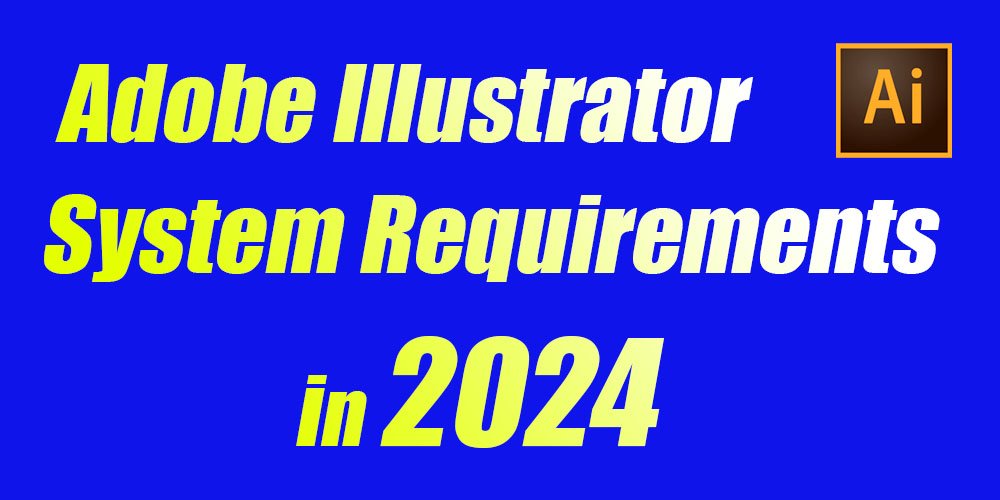As a designer, your imagination is your playground. But to translate those brilliant ideas into stunning visuals, you need the right tools. Adobe Illustrator stands tall as a vector graphics powerhouse, and for good reason. But before you dive into the world of paths, shapes, and stunning effects, let’s ensure your computer can keep up with your creative flow. Here’s a comprehensive breakdown of Adobe Illustrator system requirements in 2024, tailored specifically for designers.
Minimum vs. Recommended: Striking the Right Balance
Adobe provides both minimum and recommended system requirements. The minimum ensures Illustrator will launch, but for a smooth and efficient workflow, especially for complex projects, aim for the recommended specs.
This image is taken from: https://www.pexels.com/
Operating System (OS): The Foundation of Your Creative Suite
- Windows: Here, you’ll need Windows 10 (64-bit) or the latest Windows 11 (64-bit). With newer versions offering better performance and security, upgrading is recommended if possible.
- Mac: For Apple users, macOS 13.0 or the upcoming 14.0 (both 64-bit) are the minimum requirements. As with Windows, staying updated with the latest macOS version is ideal.
Processor (CPU): The Engine Powering Your Creativity
The CPU is the brain of your computer, handling all the heavy lifting. Here’s what you need to know:
- Minimum: A 1 GHz or faster processor (multi-core recommended) is the bare minimum for both Windows and Mac. However, this might lead to sluggish performance, especially with complex projects.
- Recommended: For a smooth experience, especially when working with intricate designs or large files, consider an Intel Core i5 or its AMD Ryzen equivalent (both 8th generation or newer). These processors offer significantly faster performance.
RAM (Memory): The Workbench for Your Designs
RAM acts as your creative workbench, holding the information Illustrator needs to access quickly. Here’s the breakdown:
- Minimum: Both Windows and Mac require a minimum of 4 GB RAM. This might suffice for basic projects, but expect sluggishness with larger files or multitasking.
- Recommended: To ensure a smooth workflow, especially for professional designers or those working with large or complex projects, 16 GB RAM is highly recommended. This allows Illustrator to handle demanding tasks without bottlenecking.
Storage (Hard Disk Space): Where Your Masterpieces Reside
Storage space holds your Illustrator application and your design files. Here’s a look at the needs:
- Minimum: A minimum of 1 GB of available hard disk space is required for both Windows and Mac. However, this might not be enough for the application itself or your projects.
- Recommended: For a comfortable experience, especially as your project library grows, consider having at least 50 GB of free storage space. This ensures you have ample room for Illustrator and your design files. Solid-state drives (SSDs) are also highly recommended for faster loading times and overall better performance.
Graphics Card (GPU): The Powerhouse for Visual Effects
While not essential for basic Illustrator tasks, a dedicated graphics card (GPU) can significantly enhance performance, especially for features like:
- GPU-accelerated effects: Apply complex effects like blurs, drop shadows, and live effects more smoothly.
- Enhanced display: Enjoy a smoother experience when working with intricate designs or zoomed-in views.
- Multiple monitor support: Work seamlessly across multiple monitors without sacrificing performance.
- Minimum: While not mandatory, a minimum of 1 GB of VRAM (video RAM) on your graphics card is recommended for both Windows and Mac.
- Recommended: For a noticeable performance boost, especially when working with demanding features, consider a graphics card with at least 4 GB of VRAM. Popular options include NVIDIA GeForce GTX 1070 or AMD Radeon RX 580 (or their newer equivalents).
Monitor Resolution: Sharper Views for Pixel-Perfect Designs
A good monitor resolution ensures you can see your designs in detail. Here’s the minimum:
- Minimum: A display resolution of 1280 x 800 pixels is required for both Windows and Mac.
- Recommended: For optimal viewing experience, especially for intricate design work, consider a monitor with a resolution of 1920 x 1080 pixels (Full HD) or higher. This allows you to see finer details and maintain pixel-perfect accuracy.
Additional Considerations for Designers
Calibration: As a designer, color accuracy is crucial. Invest in a monitor calibrator to ensure your colors are displayed accurately on your screen.
Frequently Asked Questions
Here’s a breakdown of frequently asked questions (FAQs) for designers regarding Adobe Illustrator system requirements in 2024:
Q: What’s the difference between minimum and recommended system requirements?
A: The minimum ensures Illustrator will run, but for smooth performance, especially with complex projects, aim for the recommended specs.
Q: Which OS do I need?
A: Windows 10 (64-bit) or Windows 11 (64-bit) for PC, macOS 13.0 (or upcoming 14.0) (both 64-bit) for Mac. Staying updated is recommended.
Q: How important is the processor (CPU)?
A: Crucial! A newer Intel Core i5 or AMD Ryzen 5 (8th generation or newer) is recommended for smooth performance with demanding projects.
Q: How much RAM (memory) do I need?
A: 16 GB is highly recommended for professional designers or those working on large or complex projects.
Q: How much storage space is needed?
A: At least 50 GB of free space is recommended, especially as your project library grows. Consider an SSD for faster performance.
Q: Do I need a graphics card (GPU)?
A: Not essential for basic tasks, but highly recommended for features like GPU-accelerated effects, enhanced display, and multiple monitor support. Aim for a GPU with at least 4 GB of VRAM (e.g., NVIDIA GeForce GTX 1070 or AMD Radeon RX 580, or their newer equivalents).
Q: What monitor resolution is best?
A: 1920 x 1080 pixels (full HD) or higher is recommended for an optimal viewing experience, especially for intricate design work.
Q: Are there any additional considerations for designers?
A: Yes! Invest in a monitor calibrator for accurate color display. An internet connection is helpful for software activation and online service access, but not mandatory.




